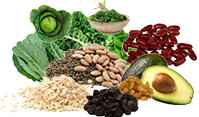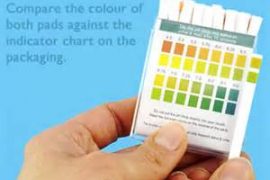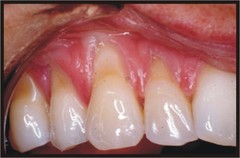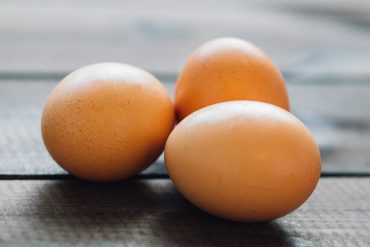Fiber is found in many foods such as the skins of fruits and vegetables, and the coverings of wheat and rice. Fiber offers numerous benefits, such as lowering blood cholesterol levels and stabilizing blood sugar. It helps with constipation, obesity and even removes some toxic metals from the body. One of the more important roles of fiber is the simple act of passing through the digestive tract to clean the intestines and give bulk to excrement.
The Institute of Medicine recommends that children and adults consume 14 grams of fiber for every 1,000 calories of food they consume. That means a person who eats 2,500 calories each day should get at least 35 grams of fiber daily, while a person who eats 1,700 calories each day needs somewhat less fiber—about 24 grams. A toddler who eats only 1,300 calories each day needs about 18 grams of fiber.
The average American eats less than half of that. The standard American diet unfortunately consists of low fiber foods that are high in fat and sugar. A high fiber diet includes fresh salads, fresh fruits, vegetables, grains, legumes, seeds and nuts etc. Low fiber diets have been correlated to an increase in diabetes, heart disease, gastrointestinal disease and cancer.
What’s the Difference Between Soluble and Insoluble Fiber?
Soluble Fiber dissolves in the stomach, mixing with foods and digestive fluids. It forms a thick gel. It is the gels fat binding action that helps in reducing cholesterol. Soluble fiber delays the emptying of your stomach and makes you feel full longer, which may help to control weight. Soluble fiber takes on a soft texture and helps to soften the stools. This fiber helps also helps to control blood glucose. Soluble fiber breaks down as it passes through your digestive tract.
Examples of soluble fiber include apples, barley, brown rice, carrots, celery, cucumbers, kidney beans, legumes, oats, oranges, strawberries and some green vegetables.
Insoluble Fiber is considered more of gut friendly fiber as it has more of a laxative effect. These fibers don’t dissolve in water, so they actually speed up the passage of food and waste through your body. This type of fiber is present in whole grains, whole cereals, fruits and vegetables. Insoluble fiber absorbs water like a sponge in the intestines. It passes through the intestines largely unchanged and adds bulk to stools.
Examples of insoluble fiber include bran beans, leafy green vegetables such as bok choy, kale, nuts, seeds, spinach, whole grains.
Why Eating Fiber Is So Important
While fiber contributes no food energy to the body, it does help to “sweep” the intestines clean. It keeps the bowel regulated which also means fewer toxins are trapped in the body. Fiber also provides bulk which relieves constipation and relieves pressure in the intestines that can lead to hemorrhoids.
Benefits of Eating Fiber
Decreases instance of constipation
Soften and expand stool volume, which in turn speed up transit time and elimination
Soluble fiber helps regulate blood sugar swings
Lowers serum cholesterol which offers protection against heart disease.
Regulates bowel movements.
Manages blood pressure
Controls blood glucose
Gallstone and Kidney Stone Prevention
Healthy Skin
Increased fiber in your diet lowers the risk of stroke
Consuming more fiber helps you to feel full and eat less
Quick Tips to Adding More Fiber to Your Diet
Try making a smoothie every day.
Add a handful of nuts to your salad
Add seeds or nuts to your yogurt, cereal, baked goods, or smoothies
Add beans to your salad
Eat the skins of appropriate fruits and vegetables
Enjoy hummus with veggies for a snack
Add a fresh piece of fruit to your breakfast or lunch.
References:
http://www.diabetes.ca/diabetes-and-you/nutrition/fibre/
http://www.diabetes.ca/documents/about-diabetes/Fibre_Eng.pdf
http://www.hsph.harvard.edu/nutritionsource/fiber/








